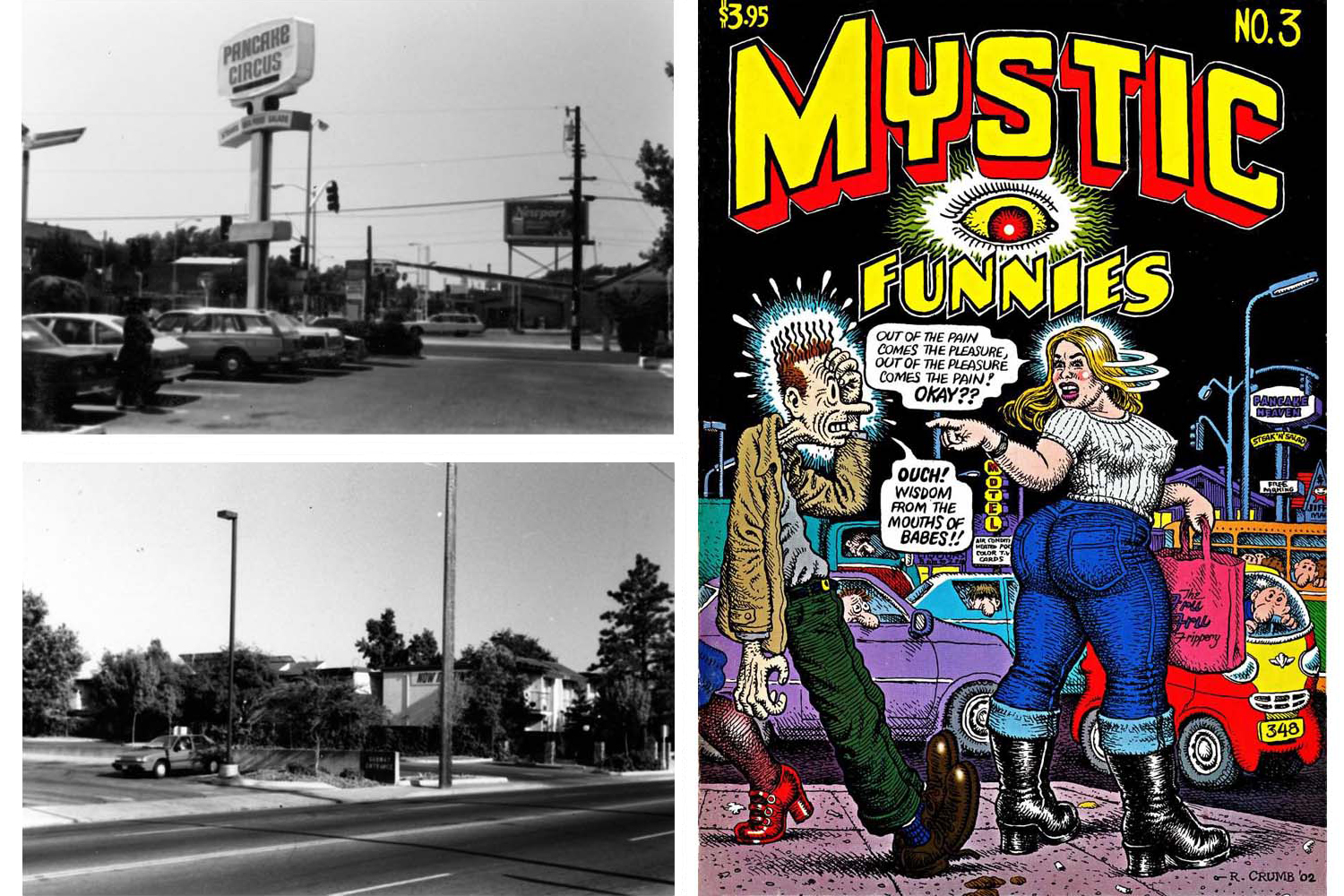
People say “it’s boring” — as if that were a final standard of appeal, and no work of art had the right to bore us. But most of the interesting art of our time is boring. Jasper Johns is boring. Beckett is boring, Robbe-Grillet is boring. Etc. Etc.
— Susan Sontag
Same could be said of Atget, Bernd and Hilla Becher, at times, Stephen Shore — all recalled, unwittingly, in a series of particularly quiet snapshots seen here for the first time, made in the late 80s as source material by the inimitable, prolific and controversial comic artist, R. Crumb. Like the canonical photographers before him, Crumb, who turned 70 in August, methodically used the camera to capture what our increasingly inattentive eyes have been trained to ignore.
“I had to always be drawing urban backgrounds in my work from memory and I had this realization that my memory was fixed in a kind of cartoon landscape of the 1920s, 30s, 40s,” Crumb tells TIME. “The modern world no longer looked like that. Garbage cans and traffic lights and all these signals and stuff was different from when I was a little kid. I didn’t want a stereotypical background that looked like something out of a ‘Mutt and Jeff’ comic strip.”
Not able to find these details flipping through magazines, Crumb persuaded a friend of his — “Stanley Something-or-other” — to drive around commercial strips and “bleak, just-built suburbs” of California with him to take pictures of ordinary street corners.
“They were just snapshots, nothing special, nothing particularly artistic. They were used for utility purposes,” says Crumb, who didn’t drive at the time and never owned his own camera. “I use photos a lot for drawing people and personalities, but they’re almost never photos that I’ve taken.”
The three-dozen or so images from that drive — a rough typology of traffic lights, power lines and other infrastructure captured mostly on a palate of middling grays with a borrowed, inexpensive camera — became indispensable to him as an artist in the later part of his career. Many of those nondescript details made their way most prominently into his comics and covers drawn for Weirdo magazine. It was a 28-issue “low-art” zine, an alternative comic self-produced with his wife Aline Kominsky-Crumb from 1981 – 1993. It showcased what is considered some of his greatest work and has been compiled in a new volume to be published this month called The Weirdo Years.
What his focus on such unsightly minutia in this anthology suggests, is that as outlandish, garish, or other-worldly as Crumb’s cartoons get, their lasting affect comes from always being firmly grounded to the banal referents of our real world.
“People don’t draw it, all this crap, people don’t focus attention on it because it’s ugly, it’s bleak, it’s depressing,” he says, “The stuff is not created to be visually pleasing and you can’t remember exactly what it looks like. But, this is the world we live in; I wanted my work to reflect that, the background reality of urban life.”
R. Crumb is an American cartoonist and musician living in the South of France. He is represented by David Zwirner Gallery in New York. The Weirdo Years (Sept. 2013) is published by Knockabout Comics in the U.K. and Last Gasp in the U.S.
Eugene Reznik is a Brooklyn-based photographer and writer. Follow him on Twitter @eugene_reznik.
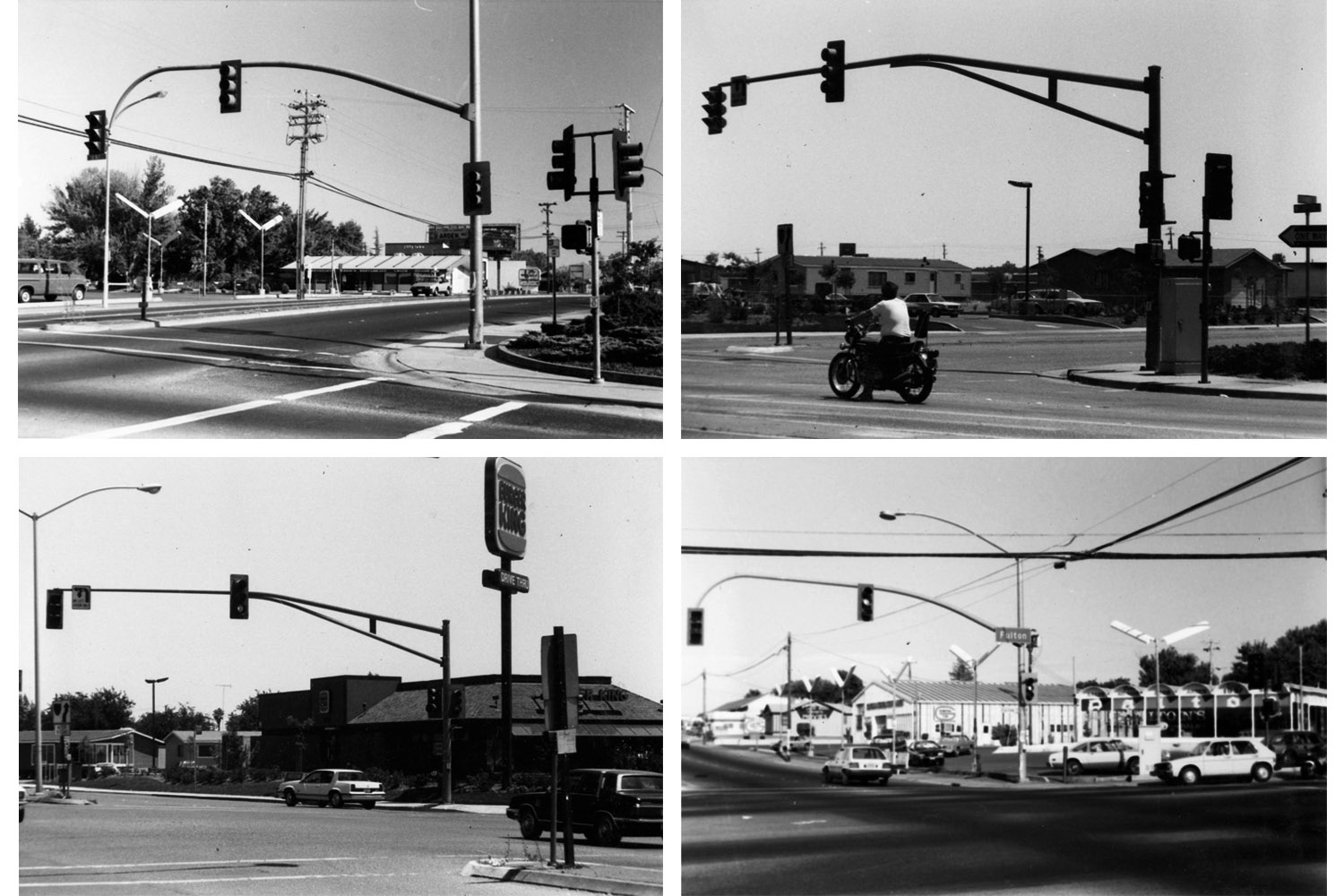

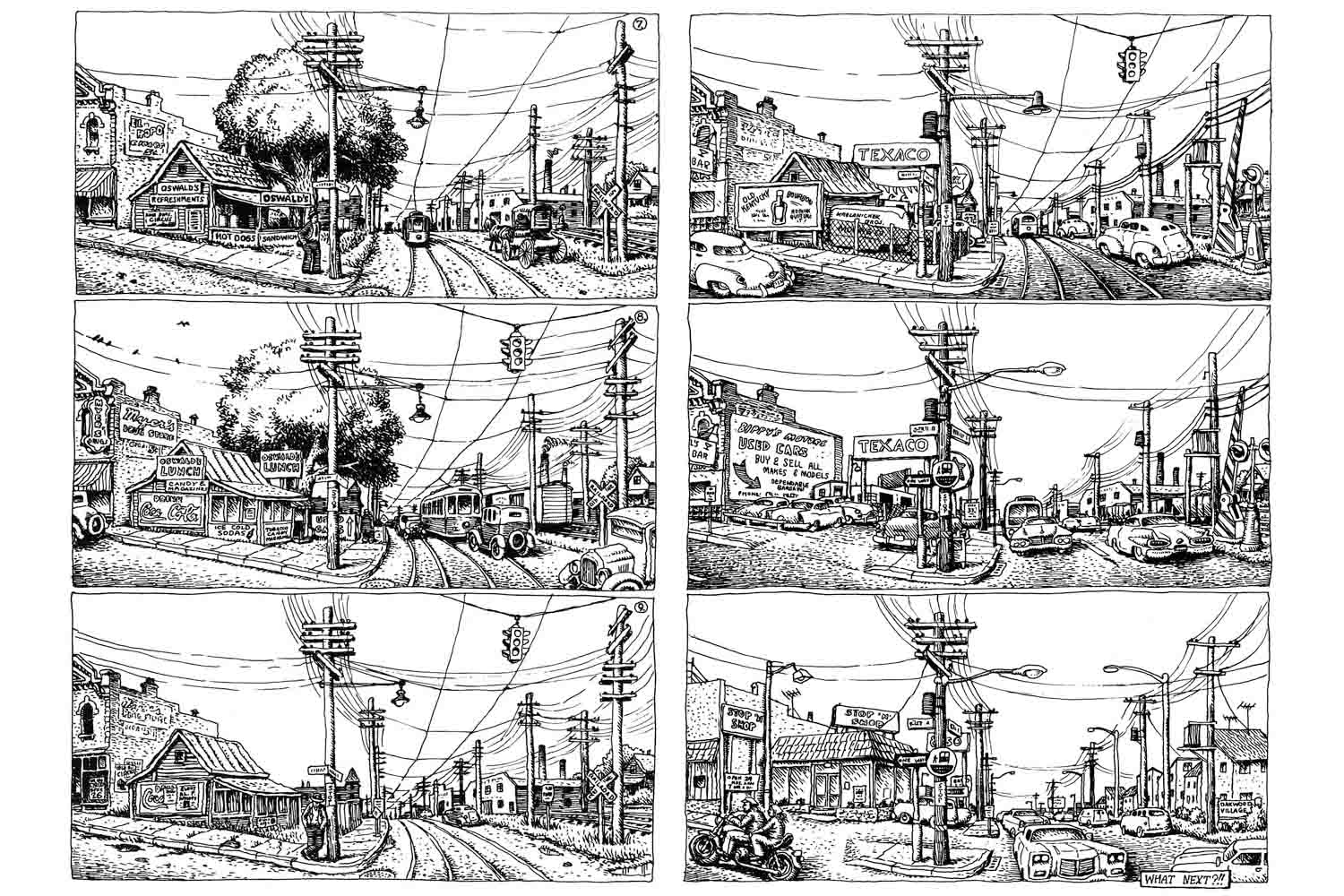


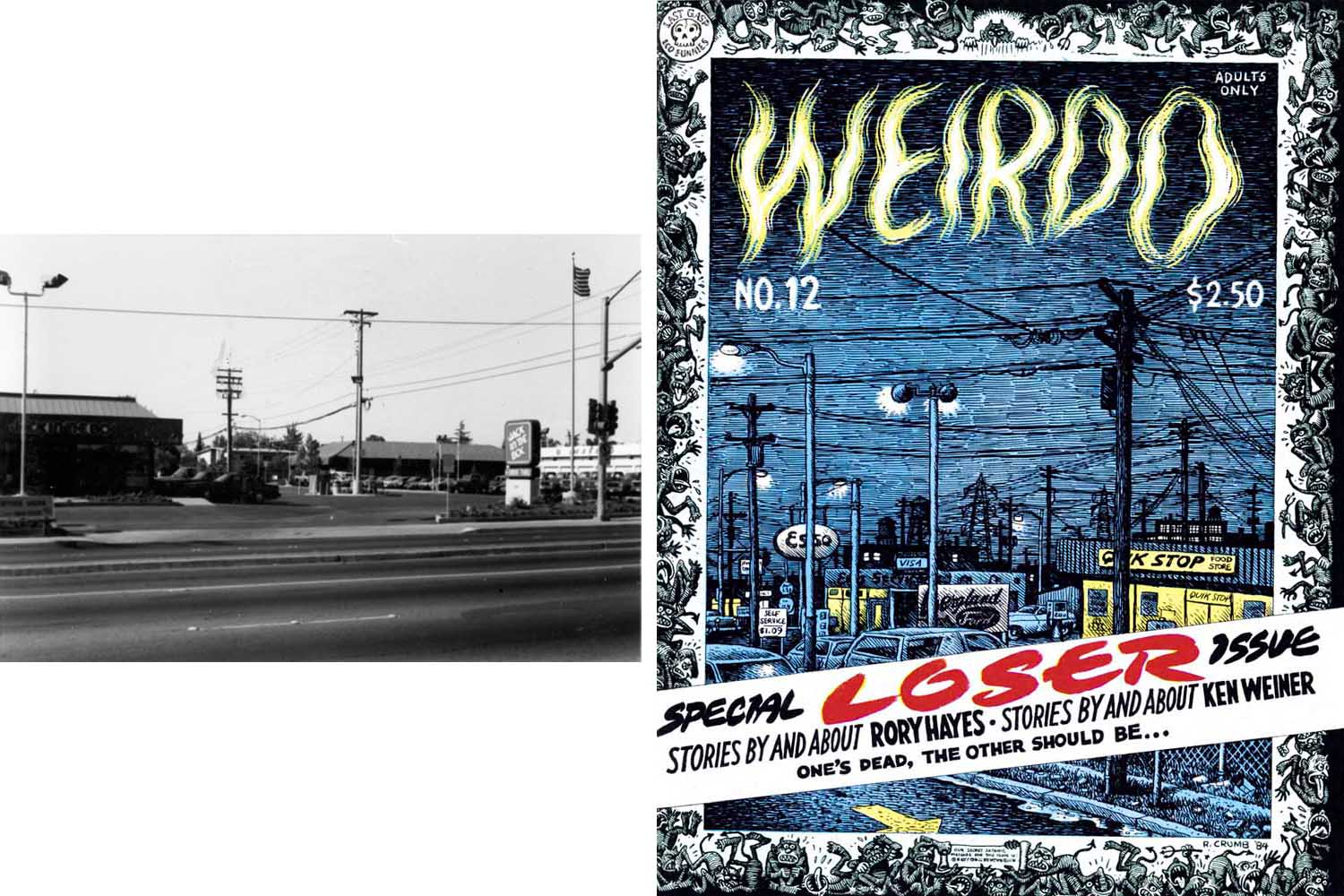
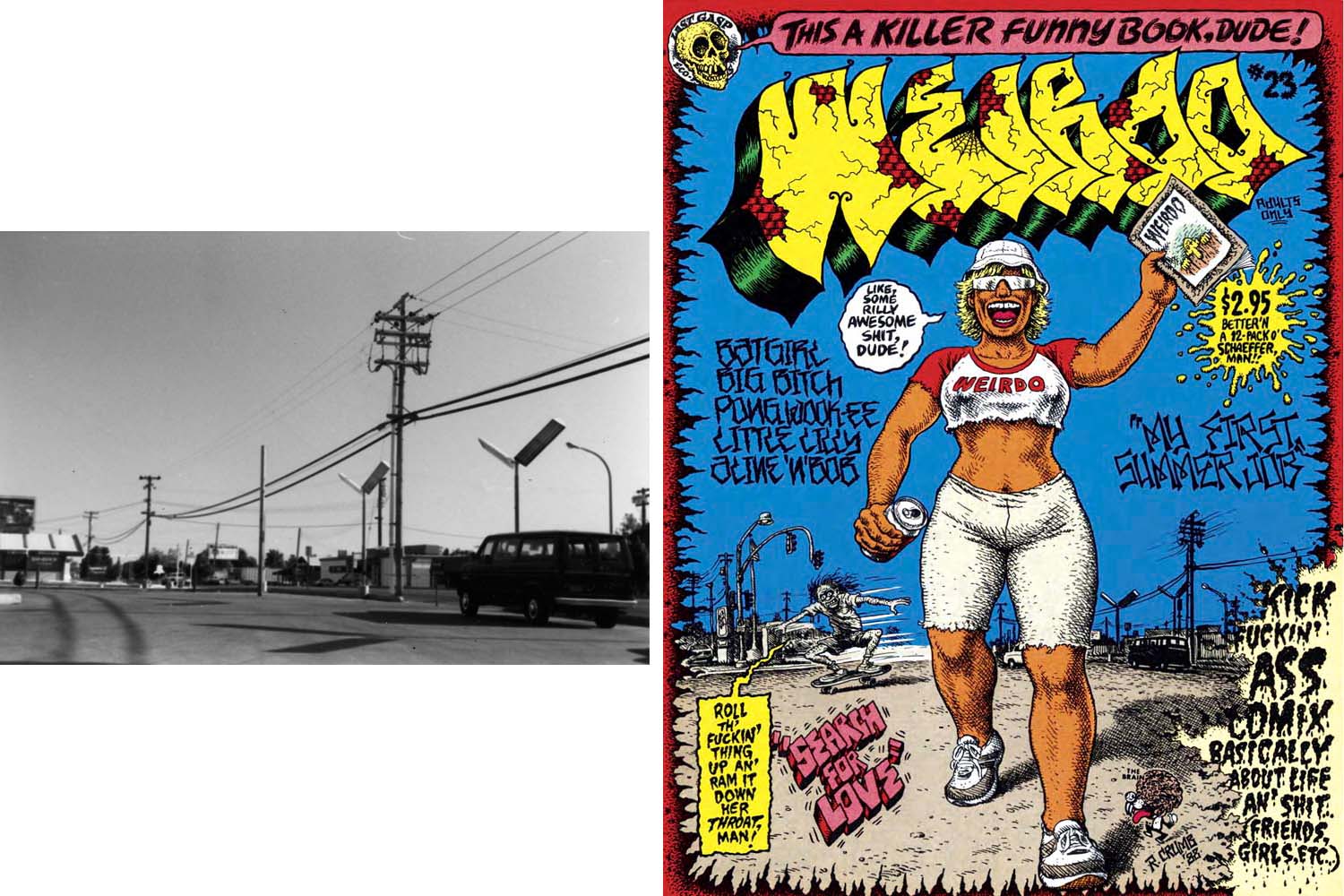
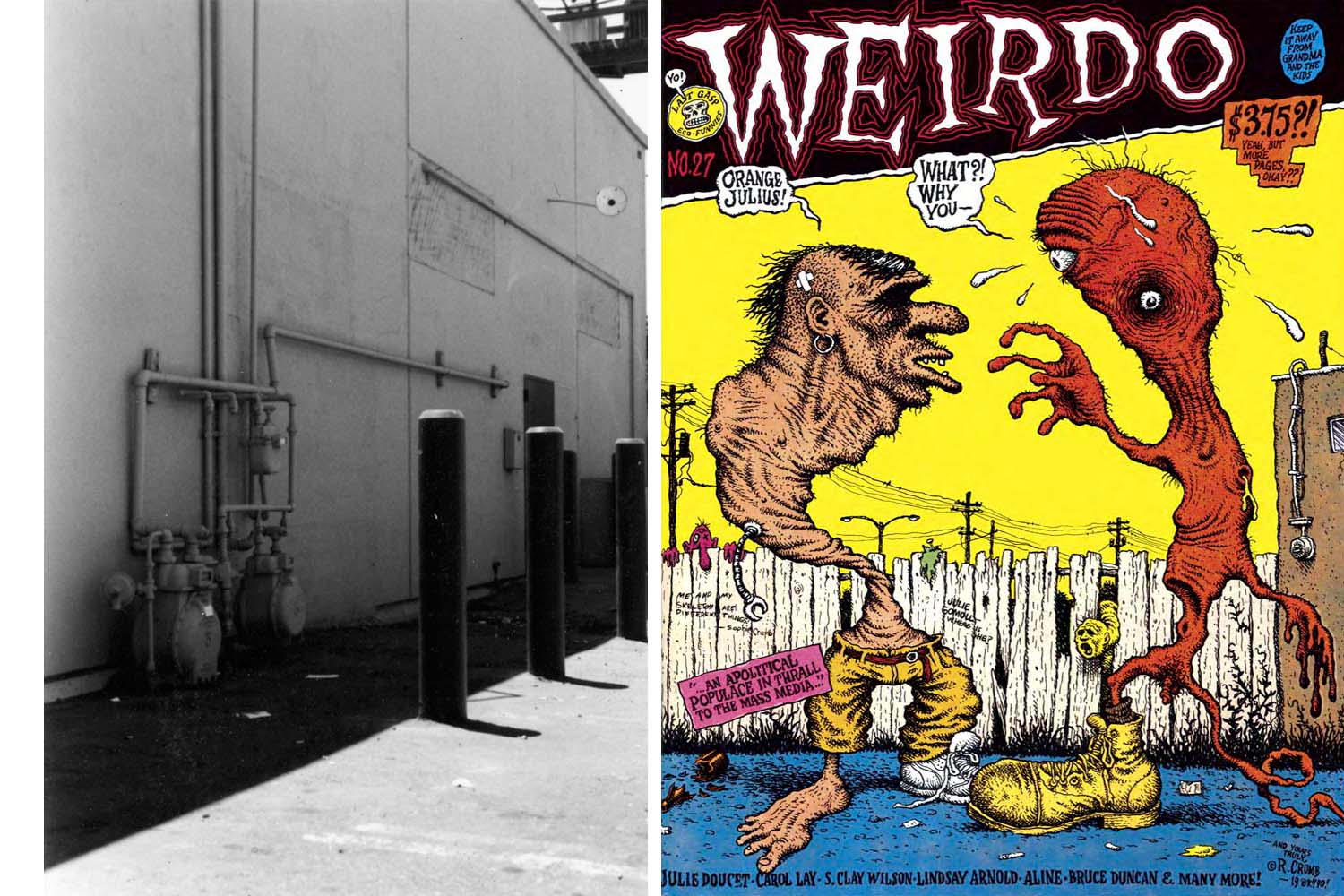

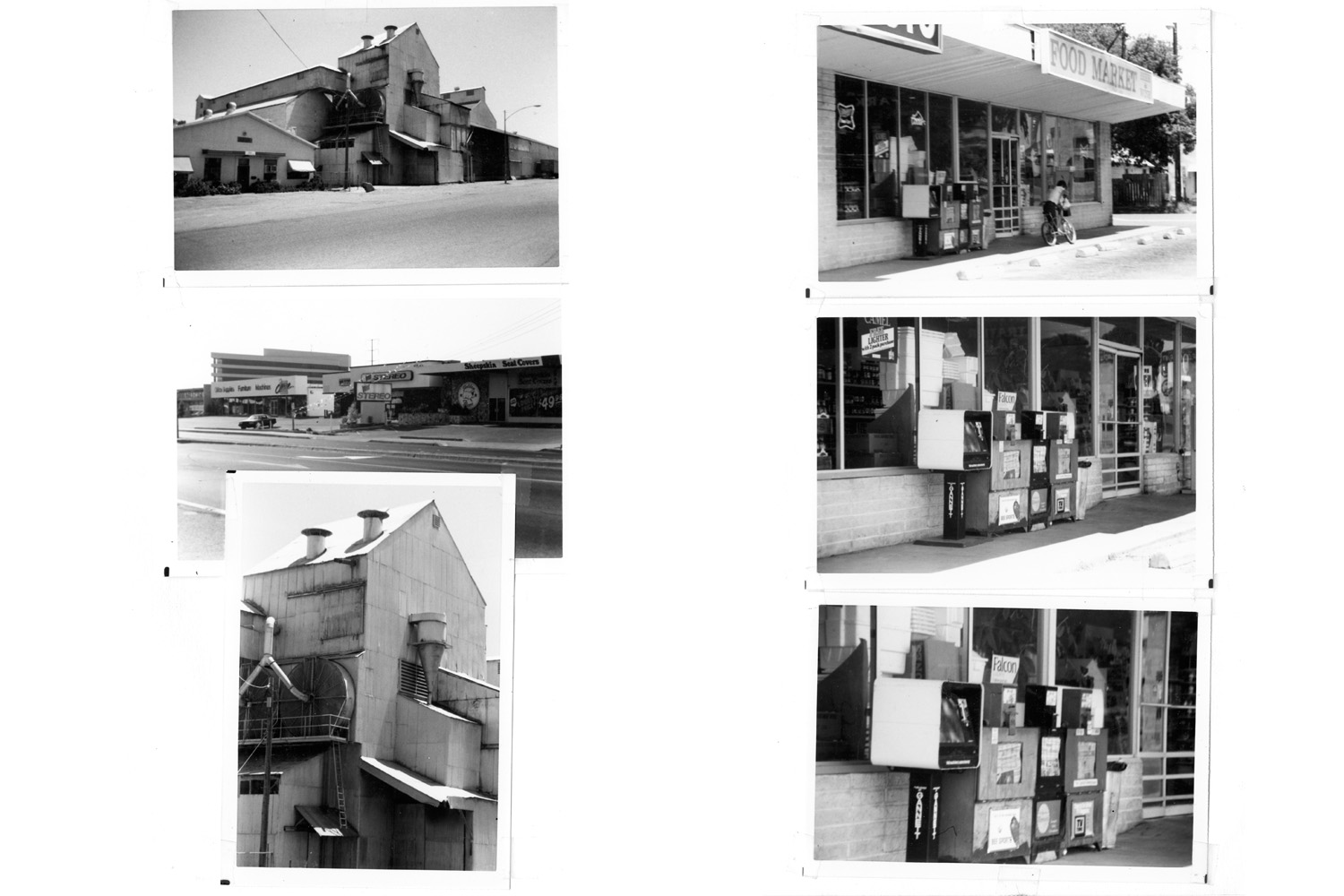

More Must-Reads From TIME
- The 100 Most Influential People of 2024
- The Revolution of Yulia Navalnaya
- 6 Compliments That Land Every Time
- Stop Looking for Your Forever Home
- If You're Dating Right Now , You're Brave: Column
- The AI That Could Heal a Divided Internet
- Fallout Is a Brilliant Model for the Future of Video Game Adaptations
- Want Weekly Recs on What to Watch, Read, and More? Sign Up for Worth Your Time
Contact us at letters@time.com